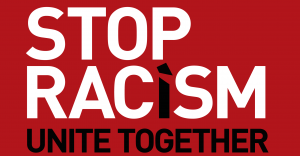(Akiit.com) Last week, the U.S. Supreme Court voted to uphold so-called “affirmative action” admissions policies at the University of Texas. Those policies had been challenged by a young white woman who believed that she was denied admission to the school while other “lesser” African-American and Hispanic students were admitted.
The Supreme Court decision is important, because it keeps in place institutional safeguards against the kinds of racism and bigotry that have been used to oppress Black Americans and other people of color for centuries. But we mustn’t cheer too ardently, at least not yet.
One Supreme Court decision does not cure 400 years of racism, and in fact, immediately after the decision, it was clear that some in our society still don’t get it.
Harold Levy, the executive director of the Jack Kent Cooke  Foundation, said in an article in the Atlantic after the ruling that he was pleased with the outcome. But he then went on to say, “I don’t think anyone can take great comfort that race-conscious affirmative action is here to stay.”
Foundation, said in an article in the Atlantic after the ruling that he was pleased with the outcome. But he then went on to say, “I don’t think anyone can take great comfort that race-conscious affirmative action is here to stay.”
Levy is far from the only one who is weary of race-conscious policies, practices and decisions. Pundits, politicians and public figures wonder aloud why “we” always have to “make everything about race.”
The fact is, even in 2016 – when the President and his wife and children are Black – everything still is about race. We don’t “make” it that way. It’s just the way it is.
Consider:
- The war on drugs has been waged primarily in communities of color, where people of color are more likely to be charged with more serious offenses and ordered to serve longer sentences.
- Students of color face harsher punishments in school than their white peers.
- While people of color make up about 30 percent of the United States’ population, they account for 60 percent of those imprisoned.
- 42 percent of Black children are educated in all high-poverty schools (both elementary and secondary), while only 6 percent of White children are educated in high-poverty schools.
- Many people of color living in circumstances stressed by poverty lack access to healthy foods.
“We” didn’t make those facts up. They’re a reality – and a stark reminder that work needs to be done on many different levels.
Most thinking people taking in the bleakness of those statistics would likely agree that there’s work to do. But some might say the work is about faulty programs, or deep-seated pathologies. Others might argue that the work needs to be done with an eye toward class or poverty, employment or family values.
Anything but race.
The fact is, the work cannot be done with heads-in-the-sand attitudes about the role race plays in nearly every aspect of American life. If it is to be successful, the work must be race-conscious.
Too many educators, administrators and college admissions gatekeepers already are operating in a racially conscious way every day. The difference is, their race-colored views are of deficits, stereotypes, differences, challenges.
At the National Urban Alliance for Effective Education (NUA), we work primarily with teachers and school leaders to change beliefs about students’ academic potential – from the earliest years all the way through college. We believe that when educators see students’ backgrounds and cultures as strengths, academic performance improves. We believe that when teachers view students as able to achieve, they see them as successful. And when children believe they can learn at the highest levels, they do.
We don’t try to eliminate race (despite evidence that the construct is meaningless, at best, or even invented). We try to tap into the collective consciousness about race and change the filter from bleak to promising.
Teachers who work with us find the process life-changing. It’s incredibly difficult to hold on to bias when you’ve been and are being exposed to diverse people, cultures and experiences – especially when that exposure is fortified by racial equity and anti-racism learning and teaching.
It was crucial for the Supreme Court to make the decision it made regarding postsecondary admissions policies. It’s a huge affirmation and a reason to be positive, when so much of the news around us contributes instead to despair.
But the decision is a drop in a bucket with holes in it. Legislating new or better policies won’t change beliefs. But changing beliefs can help those in leadership positions yearn to change their policies.
Change beliefs. Change policies. Fill the holes.
When we do that, we will find less and less need to argue race-conscious cases before the Supreme Court. We’ll find fewer reasons to argue about race at all.
Until then, we work, we fight. We continue to believe.
Columnist; Eric J. Cooper
Official website; http://www.nuatc.org









Leave a Reply